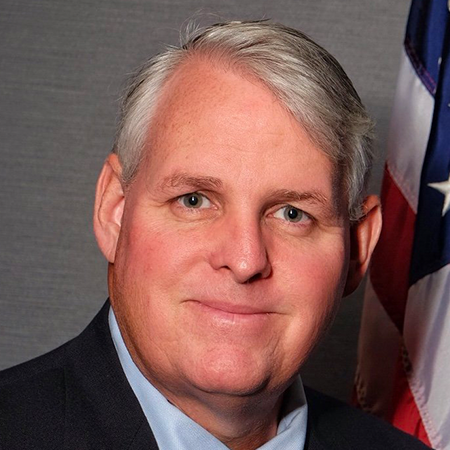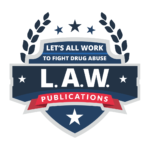
Article
Spring | 2025

Solving for X: The Order of Operations for Effective Leadership in Public Safety
By Tom Kirkbride
Spring | 2025
Introduction: The Problem with Emotional Decision-Making
Public safety professionals operate in an environment where decisions carry profound consequences. Whether you are a patrol officer making a traffic stop, a sergeant addressing an internal personnel issue, or an executive shaping department policy, every decision should be made with strategic intent.
Yet, too often, emotions cloud judgment. Fear, anger, frustration, and ego interfere with logical reasoning, leading to poor decision-making, damaged relationships, and diminished leadership effectiveness. Emotion will never serve you. Intellect, strategy, and process will.
As leaders in public safety, we must approach decision-making systematically—like solving an algebraic equation. Every situation presents a problem to be solved, and our “X” represents the best possible decision based on available facts and organizational priorities. But to solve for X, we must follow a structured order of operations—one that is free from emotional bias and rooted in rational analysis.
What Is Your Order of Operations?
In mathematics, there is a recognized method for solving problems—PEMDAS (Parentheses, Exponents, Multiplication, Division, Addition, Subtraction). In leadership, we must apply a similar framework to ensure that every decision we make is deliberate and effective. Consider these steps as your leadership order of operations:
1. Define the Problem Objectively
- Strip away emotion and focus on facts.
- Identify key variables: What is happening? Who is involved? What outcome is needed
2. Assess Possible Solutions
- Apply laws, policies, and best practices—not personal bias.
- Consider multiple options before committing to a course of action.
3. Evaluate Consequences and Risks
- What are the short- and long-term impacts of your decision?
- How will this affect personnel, the department, public perception, and legal standing?
4. Make a Decision and Commit to It
- Leadership demands decisiveness. Once you’ve analyzed the options, act with confidence.
5. Reflect and Adjust
- Leadership is a continuous learning process. Evaluate decisions after they are made, and refine your process as needed.
Every decision—whether it involves a simple citation, a major policy shift, or a high-stakes personnel issue—must follow a logical process. What is your personal order of operations?
Proactive vs. Reactive Decision-Making
One of the biggest pitfalls in public safety leadership is becoming overly reactive. Too many supervisors and executives spend their days putting out fires instead of preventing them in the first place.
Ask yourself:
- How much of my time is spent responding to crises versus planning ahead?
- Am I making decisions based on urgency or long-term strategy?
- Do I take time to analyze situations before reacting?
Great leaders invest in proactive reflection and decision-making. This means dedicating time to reviewing policies, training personnel, mentoring future leaders, and strategizing for the future. If you are constantly reacting, you are not leading—you are just managing chaos.
Developing a “What If That Happened Here—or to Me?” Mindset
In public safety, the difference between proactivity and reactivity can mean the difference between:
- Preparedness and chaos
- Success and failure
- Life and death
Effective leaders develop a mindset that constantly asks:
“What if that happened here?”
“What if that happened to me?”
This mindset is not about paranoia—it’s about preparation, strategic thinking, and staying ahead of emerging challenges. Too many agencies and leaders only act after a crisis occurs. Instead, great leaders anticipate issues before they arise.
The Power of the “What If?” Mentality
A “What If?” mindset shifts the focus from reaction to foresight. It forces leaders to analyze potential threats, risks, and vulnerabilities before they become crises.
Ask yourself and your team:
- What if an active shooter entered one of our facilities? Are we truly prepared?
- What if we faced a sudden leadership vacuum—who is next in line and ready?
- What if one of our officers is falsely accused of misconduct—do we have protocols in place?
- What if the public lost trust in our agency—how would we rebuild it?
- What if a major policy decision or operational change had unintended consequences?
These questions are not just hypothetical exercises—they are essential tools for strategic planning and leadership development.
How This Improves Public Safety Leadership
By embedding a “What If?” mindset into leadership and daily operations, agencies and leaders will see tangible improvements:
- Faster, More Effective Decision-Making – Problems are anticipated and addressed before they escalate.
- Stronger Leadership Credibility – Personnel trust leaders who think ahead rather than scramble in crisis.
- Increased Public Trust – Agencies that plan for the future demonstrate competence and responsibility.
- Reduced Liability and Risk – Proactive planning helps prevent legal, operational, and reputational disasters.
- A More Resilient Organization – Departments that prepare for multiple contingencies bounce back faster from setbacks.
“The best leaders are not those who react well to crises—but those who see them coming and prevent them in the first place.”
Mastering Self-Differentiation: The Key to Sound Decision-Making
Self-differentiation—the ability to separate personal emotions from professional responsibilities—is a hallmark of effective leadership. Without it, decision-making becomes erratic, and leadership credibility erodes.
Here’s how to develop it:
- Detach from Ego – Leadership is not about being right; it’s about doing what is best for the organization. Learn to take constructive criticism and adjust without defensiveness.
- Control Your Emotional Responses – Pause before reacting. Take a breath, assess the situation, and respond with logic rather than emotion.
- Seek Perspective – Surround yourself with mentors, trusted advisors, and diverse viewpoints. The best leaders listen before they act.
- Commit to Lifelong Learning – Leadership is a skill that requires constant refinement. Invest in professional development and stay ahead of emerging issues.
Emotional leaders make decisions in the moment. Strategic leaders solve for X with methodical precision.
The Bottom Line: Every Decision is a Problem to Solve
As public safety professional, we are problem solvers. Every decision, no matter how big or small, must be approached with the same logical rigor we would apply to an algebraic equation. The ability to separate emotion from logic, develop a structured approach to decision-making, and think proactively is what defines great leadership.
What is your order of operations? How do you solve for X?
Ask yourself:
- What if I’m thrust into a leadership crisis tomorrow? Am I prepared?
- What if my agency faces a major scandal, lawsuit, or crisis? Do I/we have a plan?
- What if I don’t prepare now? What will the consequences be later?
Your answer will define your leadership effectiveness, the success of your organization, and your impact on the profession.
Now, take a moment to reflect—are you solving for the right X?
1 Citaton one goes here
2. Citation two goes here

David Blake

Duane Wolfe

Guler Arsal

Joel Suss
Research contributor and author info go here.

Tom Kirkbride
Judge Tom B. Kirkbride, principal attorney at Kirkbride Law, P.C., licensed in Georgia and Federal Courts is a distinguished employment law attorney with deep expertise in public safety and labor issues. A former U.S. Army veteran and retired Supervisory Federal Air Marshal, Tom has dedicated his career to serving and protecting public safety professionals. His legal practice focuses on proactive solutions to employment law concerns, including Equal Employment Opportunity (EEO) complaints, civil rights matters, and disciplinary actions. With a commitment to justice and a wealth of experience, Tom is a trusted advocate for workers’ rights and employment protections.
For training, consulting, or speaking requests, contact Tom at tom@kirkbridelaw.com or (678) 719-0331.
© 2025 Tom B. Kirkbride. All Rights Reserved.
You May Also Like:
GACP PARTNERS




















